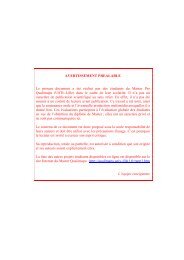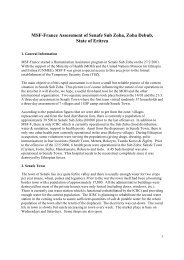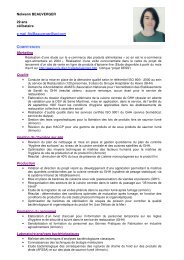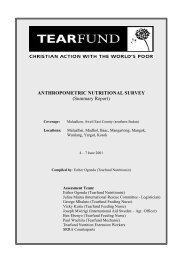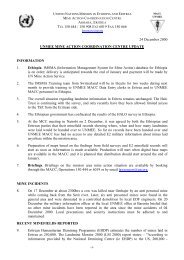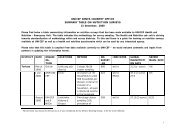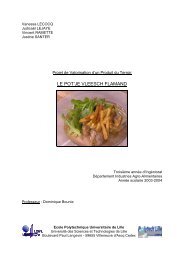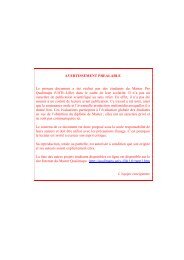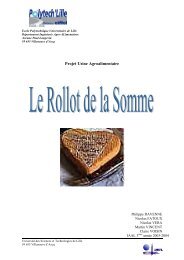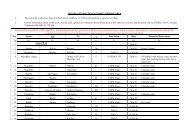IDPs (ACF) - PFEDA / Page d'accueil PFEDA
IDPs (ACF) - PFEDA / Page d'accueil PFEDA
IDPs (ACF) - PFEDA / Page d'accueil PFEDA
Create successful ePaper yourself
Turn your PDF publications into a flip-book with our unique Google optimized e-Paper software.
help in the interpretation of results of the Nutritional Survey and has been included in<br />
Annex 2.<br />
The Nutritional Survey took place at the time when the 1 st rainy season was in process<br />
(the ‘Gu’ season). This year the rains have arrived in Mogadishu, as in everywhere else in<br />
the country. As the population of Mogadishu has become increasingly reliant on<br />
agricultural activities, this may have some significance in the survey results, as it<br />
correlates with a time of a traditional ‘Hunger Gap’ – i.e. the period prior to harvesting.<br />
Market prices of sorghum and maize, stable parts of the diet of the population, have<br />
increased during the period prior to the Nutritional Survey by around 3%. This first half<br />
of the year (January – June), is in addition, corresponding with the period of time when<br />
there is the majority of the admissions into the <strong>ACF</strong> TFCs (see Annex 2).<br />
The Cholera outbreak was just starting to tail off during the Nutritional Survey. This<br />
assumption corresponded with both the traditional period for the end of the Cholera<br />
outbreak, and the statistics for the Cholera Treatment Centres in the town (all of which<br />
were reducing).<br />
Although its extremely difficult to say with any certainty, a hypothesis could be made<br />
that the IDP population is likely to be more vulnerable than the normal resident<br />
population of the town of Mogadishu. Their income generating activities are limited (See<br />
Annex 2 – for income generating activities of <strong>IDPs</strong> and how much each activity pays).<br />
What better possibilities for employment that there are in the city are generally taken by<br />
the resident population. (Ref: Broudic, C., 1997, Socio – Economic Context of the<br />
Vulnerable Population in Mogadishu, Nairobi, <strong>ACF</strong>).<br />
In <strong>ACF</strong>s 4 TFCs in Mogadishu, <strong>IDPs</strong> are twice as likely to frequent the TFCs as residents<br />
of Mogadishu (<strong>IDPs</strong> comprising approximately 20% of the population make up globally<br />
45% of the admissions in the 4 TFCs).<br />
The IDP population was consequently chosen as the target group for the <strong>ACF</strong> Nutrition<br />
survey for the following reasons:<br />
- Security and Access, the presence of <strong>ACF</strong> in these camps for an extended<br />
period of time meant that they were considered safe to visit.<br />
- Overall, this group was considered to represent a part of the population that<br />
was likely to be affected by malnutrition.<br />
Population figures for Mogadishu vary considerably depending with who they are<br />
discussed. <strong>ACF</strong> based its population figures on available information from the Elders, the<br />
<strong>ACF</strong> Water and Sanitation team, and, the <strong>ACF</strong> Health Education team. The IDP<br />
population of Mogadishu has built up considerably over the last 10 years. Their reasons<br />
for displacement are varied, but drought, famine and war have all had an important part<br />
to play in the last few years.<br />
It was estimated that 237,000 people live in the IDP camps in and around Mogadishu;<br />
approximately 135,000 of them (57% of the IDP population) were included in the survey.<br />
8



